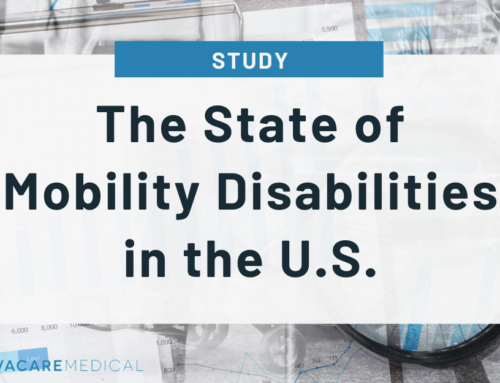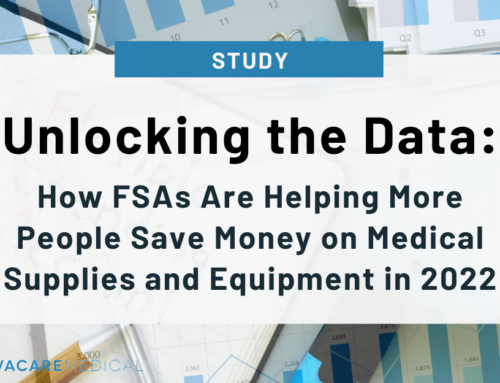The arm helps us in our daily tasks. The arm is one of the most important parts of our body, from reaching, gripping, and holding things. It will be so hard for us when our arms get damaged. That’s why we protect them from lymphedema. The lymph system helps our body fight infection by removing waste items from our cells. When our lymph nodes cannot remove fluid from our tissues, we may develop lymphedema. Swelling in the arms and legs is a possible side effect.
This article will show how to wrap the arms to reduce lymphedema swelling. Multi-layer, short-stretch bandaging is the name of the wrapping technique. We will demonstrate how to wrap the arm and advise you on the best compression bandages for arms or whether you need to wrap your fingers.
Supplies:
Compression bandaging is an essential component of arm treatment. Multi-layer bandages put more strain on the tissues. It can assist prevent edema from returning and sustain the progress made after the intense treatment. Bandaging can also aid in the softening of fibrosis and the reshaping of the limb. The productivity of the muscle and joint pumps is also improved by bandaging. Pins, needles, pain, numbness, or discoloration of the fingers should never be caused by compression bandaging. Remove bandages and notify your caregiver or the one helping you if you suffer from these symptoms.
Compression bandage on an arm
If you damage your arms in a fall or an accident, you may need to wrap them to reduce swelling and expedite recovery. Compression bandages can typically heal a mild wrist sprain, but if your wrist is in extreme discomfort, get medical help. These are the steps for wrapping your arm using compression bandages:
- Use a low pH lotion for dry skin on your arm to avoid dryness. Before wrapping your arm, let the lotion absorb. Pull the stockinette to the elbow of your arm. About 2 inches below your shoulder, the stockinette should end. Make a small hole for your thumb in the bottom of the stockinette. The hold should be around 2 inches away from the stockinette’s edge.
- Wrap your arm in the fluffy, multi-layer compression bandage. Wrap your wrist once, then twice around your hand. Wrap your arm around your shoulder and back again. It’s critical to use sufficient padding to ensure that your arm is the same breadth from wrist to shoulder. Smaller regions of your arm, such as your wrist and forearm, may require additional padding.
- Cover the fluffy cushioning with two compression wraps. When wrapping your arm with these bandages, make sure your fingers are gently split apart. With each bandage, wrap it in a different direction. Overlap roughly half the breadth of the bandage as you wrap. The bandage should be just snug enough to hold its shape.e The compression bandage should entirely cover the fluffy cushioning.
To ensure that your wrap is not overly tight, check the blood flow in your fingertips using a blood pressure monitor.
- Start with the smallest bandage. Make an anchor wrap around the arms to keep the bandage in place.
- Wrap the bandage around your hand 2 times with the thumb out. It will make moving your hand much easier. Cover your knuckles with the bandage.
- Wrap your arm around your fist. Wrap your arm in the bandage until it is completely covered, and keep the end in place with medical tape.
- Wrap your arm in the other direction using the larger bandage. Keep the end in place with medical tape.
Best compression bandage for the arms
A compression bandage is a piece of fabric used to cover wounds, maintain dressings in place, provide pressure to control bleeding, support a medical device like a brace or splint, or support the body on its own. We can also use it to bind a specific bodily part. Multi-layer, short-stretch, and triangular compression bandages are the most common arm bandages.
You can use Multi-layer compression wrapping to treat venous stasis ulcers caused by edema or lymphedema. The objective is to use elastic stockings or an appropriate bandage to minimize swelling. They are often built of various materials and might have two, three, or four layers.
Elastic vs. inelastic; short vs. long stretch; intense compression vs. mild vs. low compression; single-layer vs. multi-layer; and stockings or bandages vs. pumps are some categories that compression wrapping goods fall into. The actions and pressures of the good differ, but they are all characterized by the amount of compression they provide to the arms. These edema and wound-healing compression wraps are normally used for 3 to 7 days. The compression wrap must be kept clean and dry at all times.
Arm fractures and lymphedema are treated with a wrap called a short-stretch bandage. Because of its elasticity rating, it is referred to as a “short-stretch.” These bandages have a stretch rating of 30% to 90% beyond their non-extended length. As a result, they can offer continuous compression to the arm. These compression bandages operate with your muscle to reduce swelling and improve lymph flow.
Short-stretch bandages also offer a variety of compression options. It delivers mild resting compression for safety and comfort but increases working compression while the user is up and about, and it changes the compression to fit the user’s needs. The bandage works harder to prevent swelling as the extremity tries to swell. Users are often urged to exercise in their bandages because it works better when active. It is advisable for those with vascular disease because of the reduced resting compression.
A triangular bandage or sling is typically constructed of cotton or muslin material. These bandages are quite useful and adaptable. These can be folded into a sling or used to apply pressure to a bleeding wound.
Triangular bandages are a necessity that should always be present in the specified quantity and condition in your first-aid box. Not every accident necessitates medical attention or emergency assistance. In certain circumstances, all required to treat a wound is a triangular bandage.
Final Thoughts
These arm compression bandages are “compression alternatives,” They give more compression than typical compression garments. They’re simple to use and provide consistent, comfortable resting and increased working compression when the wearer is active.
It’s crucial to remember that compression bandages aren’t meant to replace medical attention in a more serious injury. If you’re looking for products that can help you with your needs, you’ve come to the right place. AvaCare Medical has it all for you! For more information, please email us here at info@avacaremedical.com or contact us here at 1-877-813-7799. Contact us anytime!



